Staff from the Arnold Arboretum of Harvard University and colleagues from the North America-China Plant Exploration Consortium are embarking this fall on a plant collecting trip in the Appalachian Mountains region, the conservation partnership’s first expedition in North America in its 30-year history. Our intrepid explorers—Head of Horticulture Andrew Gapinski, Propagator Sean Halloran, and Living Collections Fellow Jared Rubinstein—are sharing their experiences in the field through a series of blogposts. This is their first transmission; see the first, second, fourth, fifth, and sixth parts.
Our 2019 collection trip in Appalachia began in earnest with our first true day of collecting in southern Ohio at the Edge of Appalachia Nature Preserve, a beautiful 20,000 acre site on the western flank the Appalachian Mountains managed by the Nature Conservancy and the Cincinnati Museum.
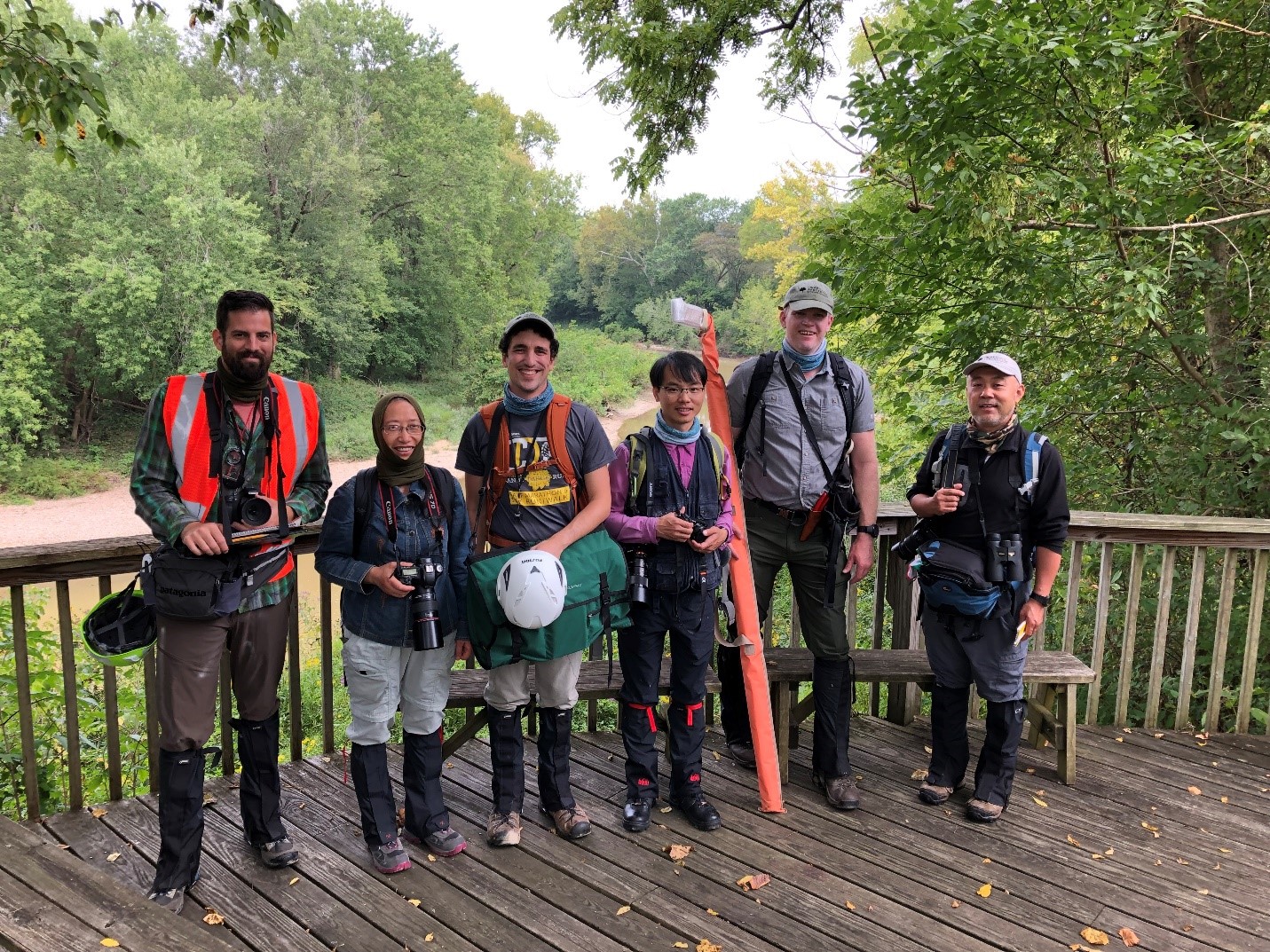
We were joined by Greg Payton, Director of Living Collections at the Dawes Arboretum in Newark, OH and guided by Chris Bedel, the preserve’s director.

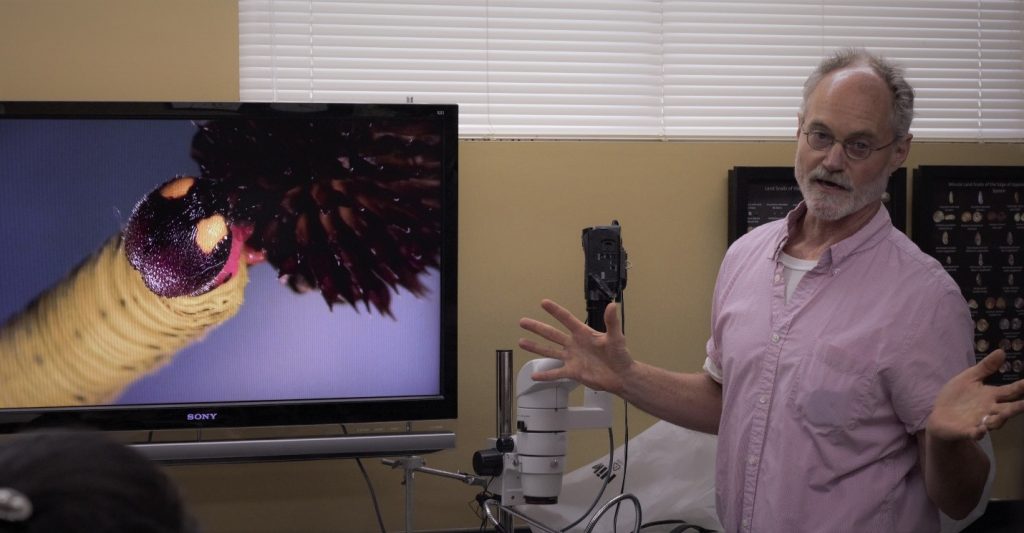
We finally had the chance to put on all of our insect repelling gear (lone star ticks were swarming at the Edge of Appalachia Nature Preserve) and headed out to the Lucy Braun Lynx Prairie Preserve, where we made our first collection of Magnolia acuminata, the cucumber magnolia.
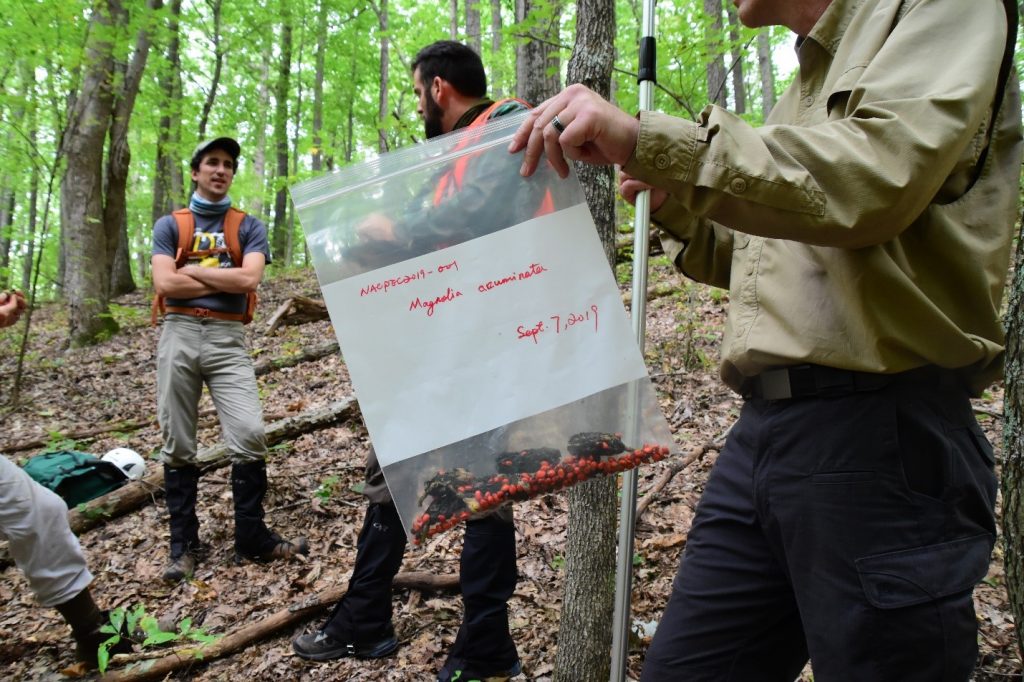
The seeds we collected from the magnolia—and all the plants on the trip—will eventually be shared with the Beijing Botanic Garden, the Arnold Arboretum, and the other members of the North America China Plant Exploration Consortium (NACPEC), as well as with the National Germplasm Repository in Washington, DC.
To collect seeds off of high branches, we brought along a 40’ telescoping pole designed to measure utility lines to which we attached a hand sickle. We could then stand under a tree and telescope the pole out until we could hook the sickle over the branch and pull. Ideally, the branch would be cut by the sharp knife and the seeds would fall to the ground.
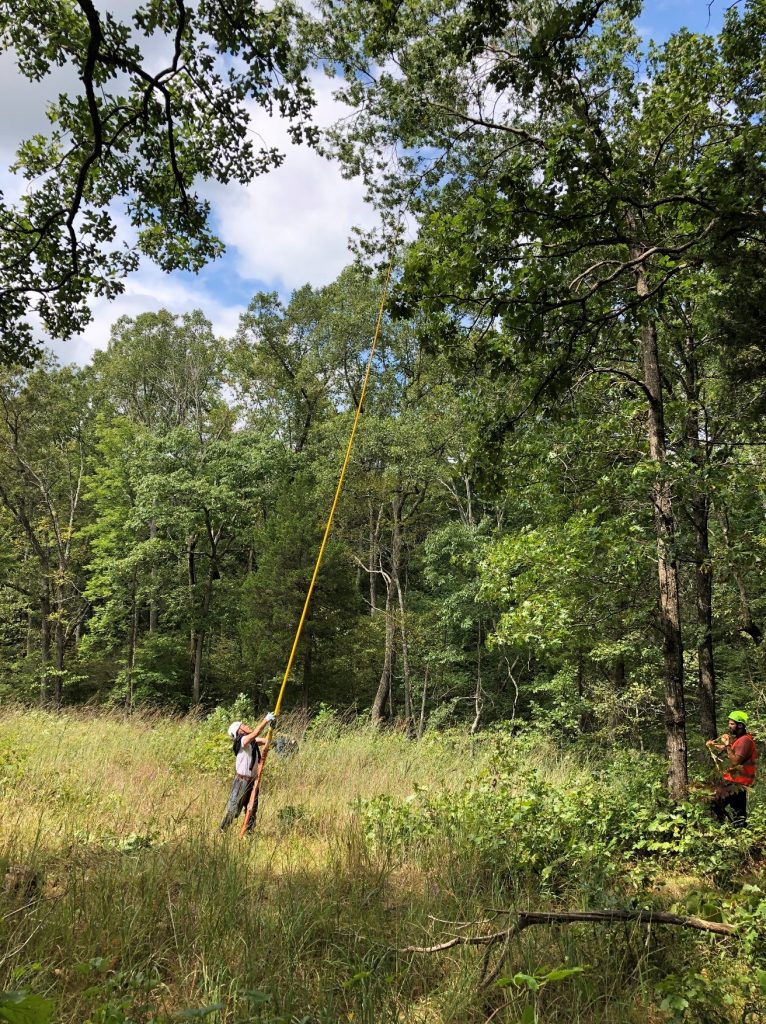
We made eleven collections at the Edge of Appalachia, including scarlet oak (Quercus coccinea), common persimmon (Diospyros virginiana), and dwarf hackberry (Celtis tenuifolia). We were particularly excited to find the hackberry, as the existing dwarf hackberries at the arboretum are in decline. All in all, an excellent first day!
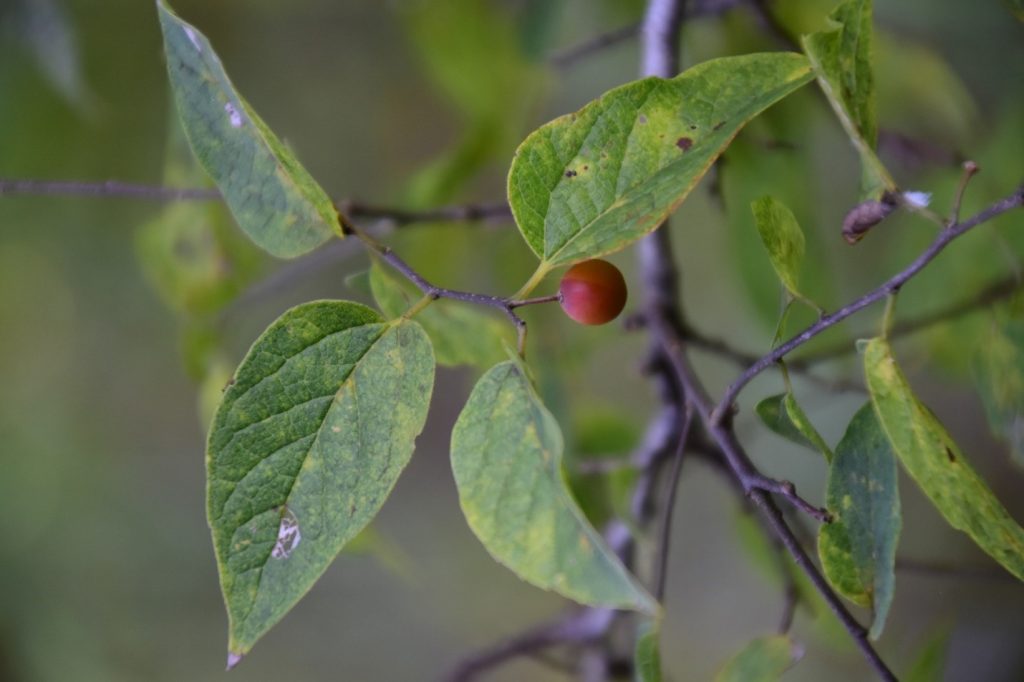
The next morning we drove down to Daniel Boone National Forest in Kentucky, and met up with Emily Ellingson, Curator and Native Plant Collections Manager at The Arboretum, State Botanical Garden of Kentucky (and a former colleague of mine from the University of Minnesota!) and Rob Paratley, Curator of the University of Kentucky Herbarium.
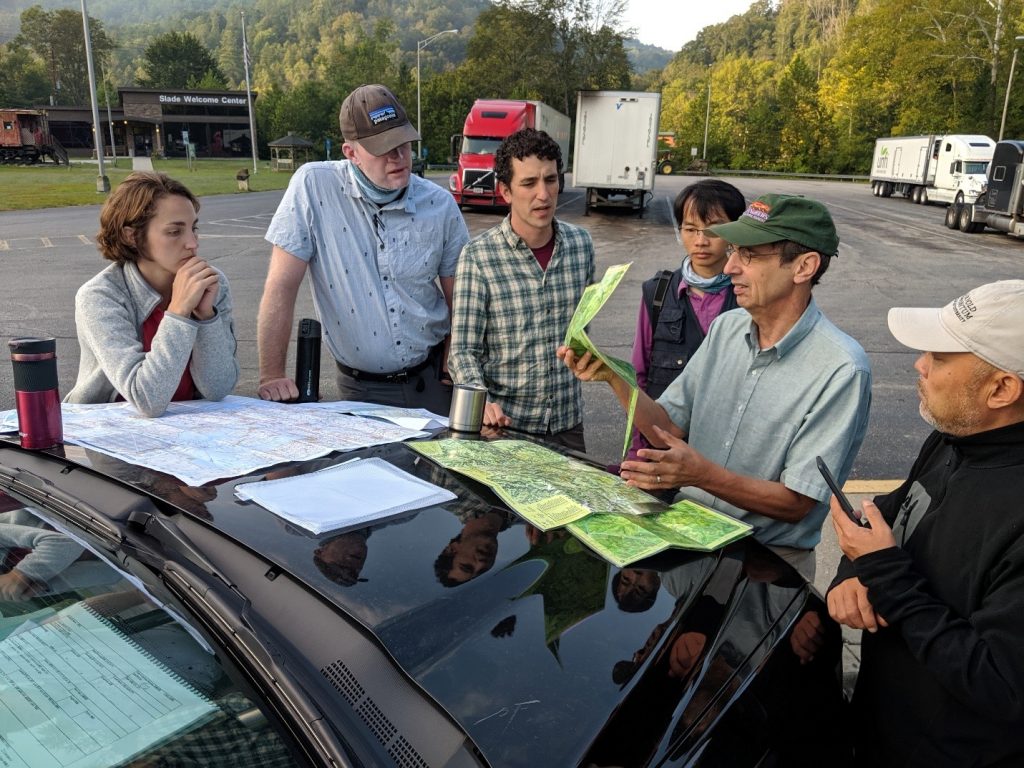
Rob and Emily expertly helped guide us through the National Forest to find and collect two more magnolia species (M. tripetala and M. macrophylla), a redbud (Cercis canadensis), and a sycamore (Platanus occidentalis) that required us to use logs and rocks to ford the Red River. Xinfen studies the pea family (Fabaceae) and the rose family (Rosaceae), so she was particularly excited to find the redbud.

Our day included a delicious lunch at Miguel’s Pizza, a favorite for climbers and other visitors to Daniel Boone, and a visit to an amazing group of eastern hemlock (Tsuga canadensis) growing along a huge boulder.

That night (and every night thereafter), we returned to our Airbnb to begin cleaning and sorting the seeds we’d collected. Lighting was particularly dim, so headlights were required! Once the seeds were clean, we counted and bagged them before eventually shipping them back to the Dana Greenhouse at the Arboretum.
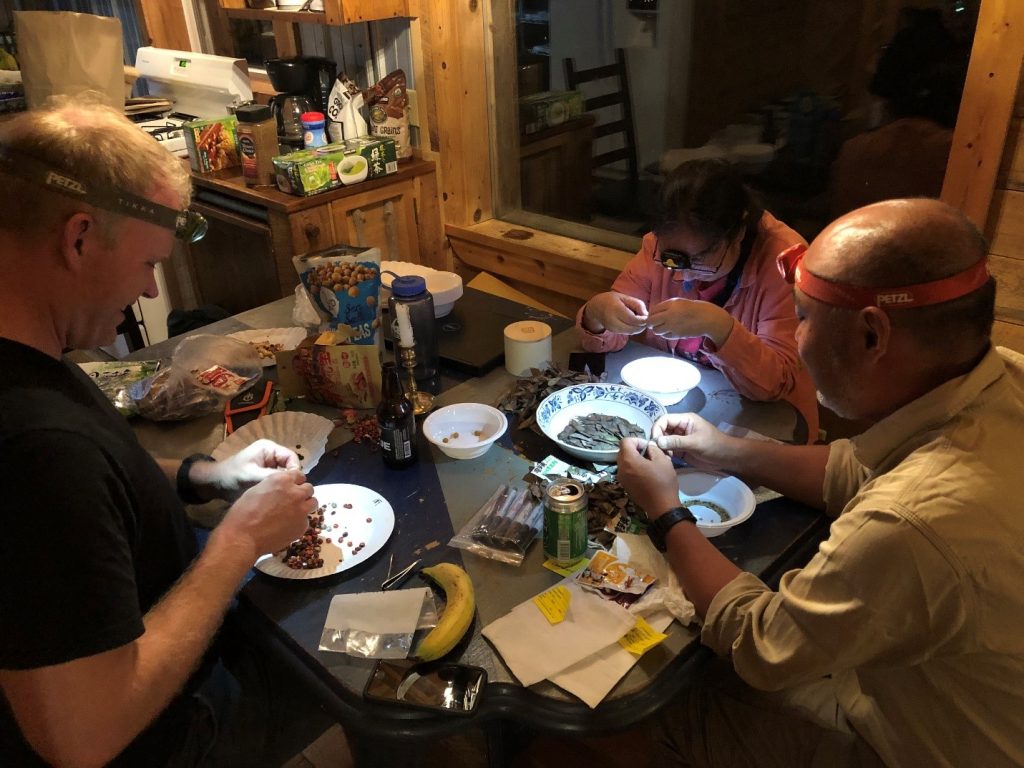

The following day we headed to the Berea College in Berea, Kentucky. The college accepts students from around Appalachia and is tuition-free! It was also one of the first co-educational and racially integrated colleges in the country.
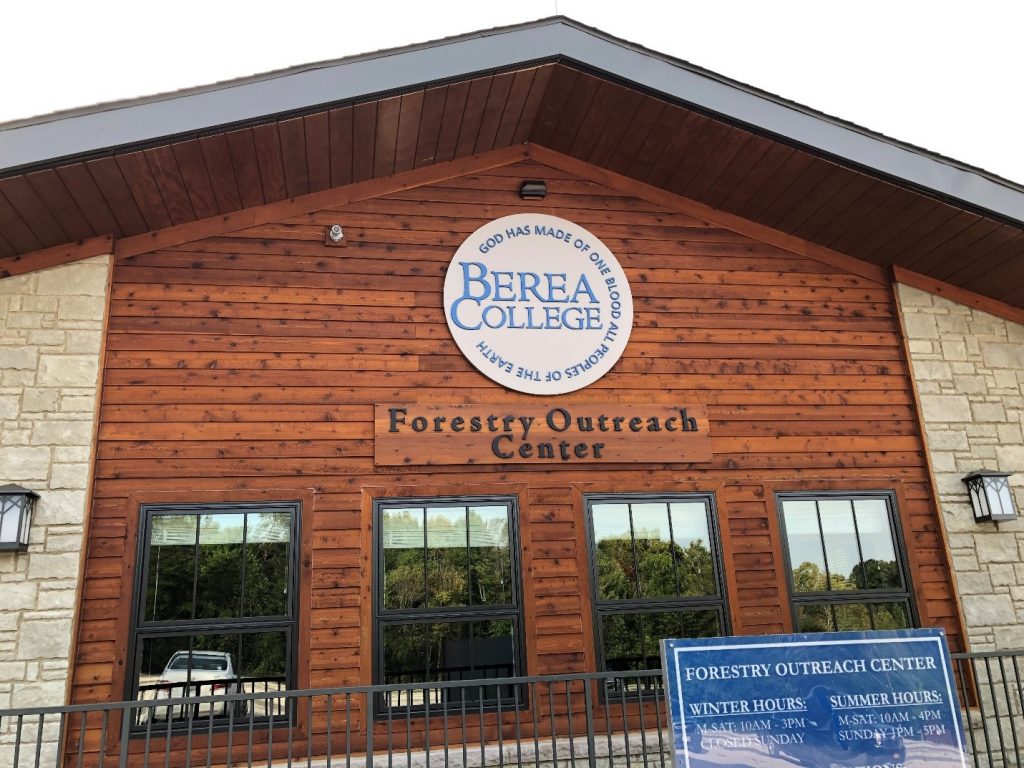
The Berea College Forestry Department manages 8,000 acres of forest, and granted us permission to explore and collect throughout. Guided by Glen Dandeneau, Assistant Forester and the rest of the staff, we hiked to the top of the Indian Fort Mountain Trail and made eight collections, including several species of rose, much to Xinfen’s delight, and chestnut oak (Q. coccinea). We also found one of the southernmost pockets of big tooth aspen (Populus grandidentata) and dug up root cuttings for propagation at the Dana Greenhouses.
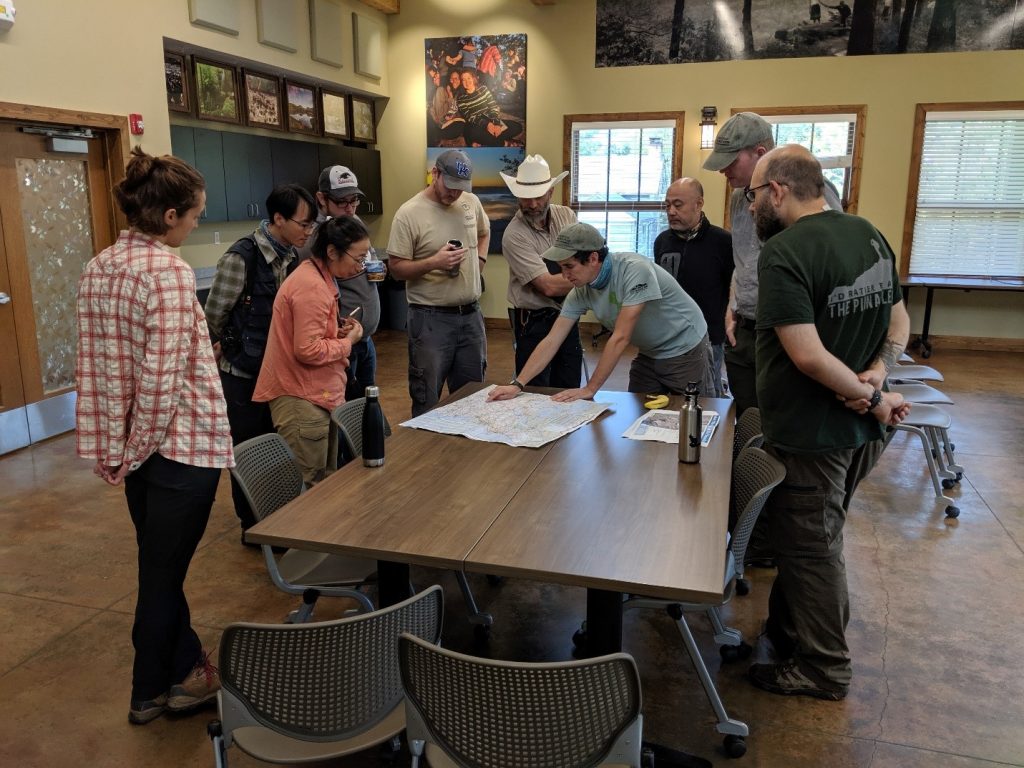
Along the trail we also spotted a grove of pawpaw (Asimina triloba), which form a mango-like fruit. Rather than wait to the scoop the seeds out of the fruit that evening, Kang decided to “clean” the seeds using a more culinary exciting technique.
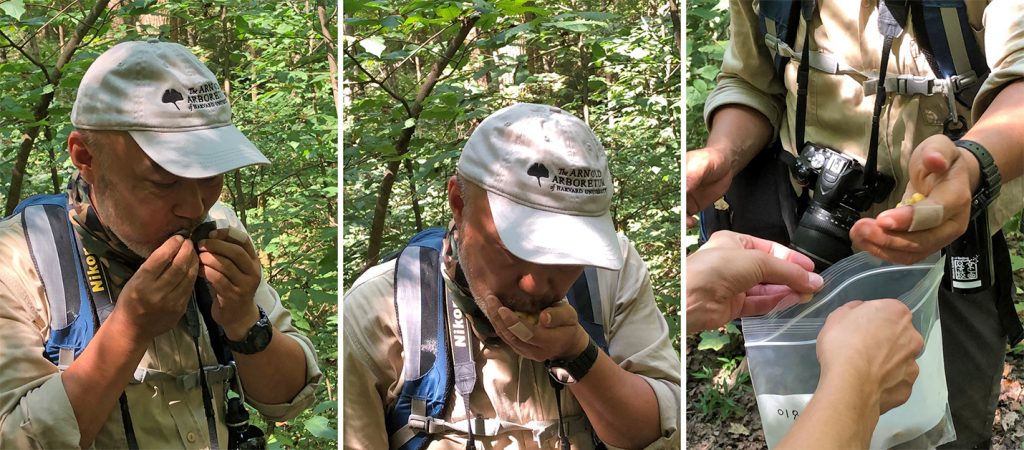

We ended the day with a hike along the West Fork Silver Creek and made several more collections.
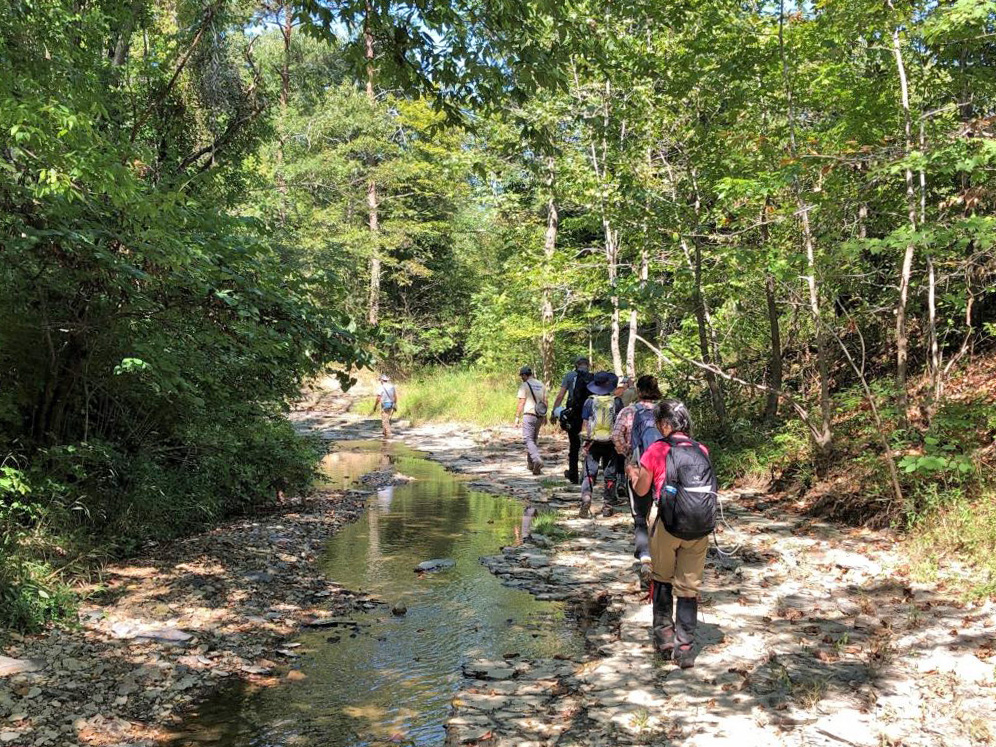
We spent our last day in Kentucky collecting at Floracliff Nature Sanctuary with Beverly James, the sanctuary’s director, and Josie Miller, stewardship director. Floracliff protects 346 acres in the Kentucky River Palisades, and contains more limestone soils than the previous sites we’d visited so we were able to make a few more collections there. We found our first hickory (Carya tomentosa) in fruit!
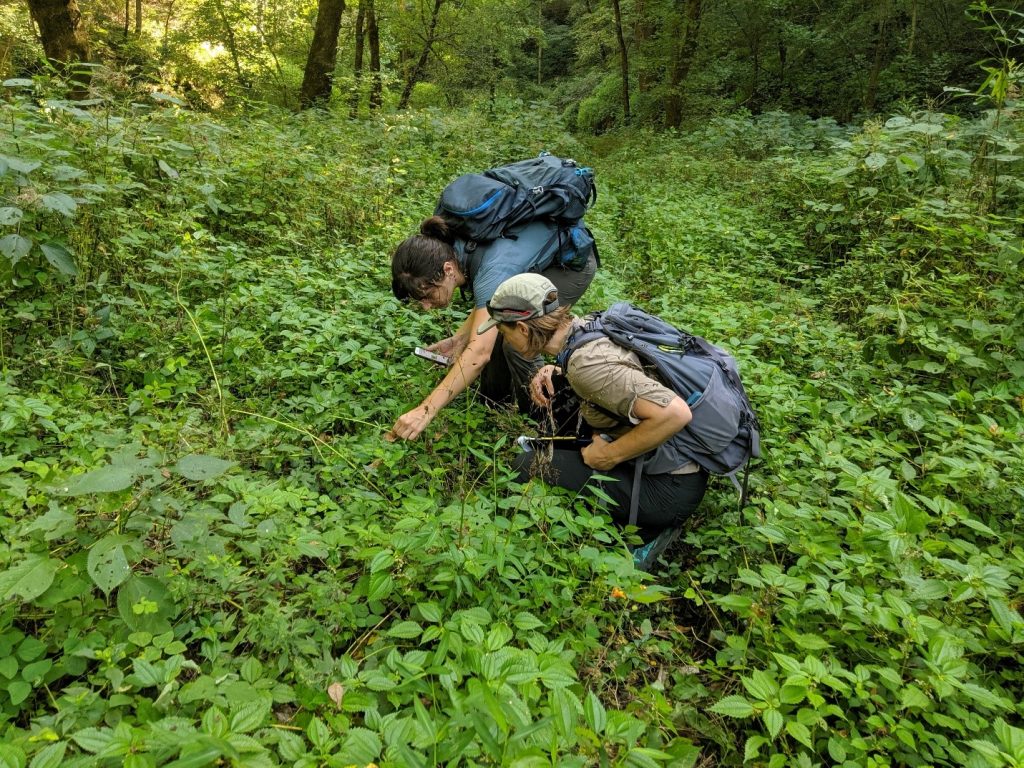
After cleaning and sorting seeds, we said goodbye to Kentucky with a quick stop at a Kentucky Fried Chicken, and headed south to Tennessee. Our guides and local experts were so helpful, and were extremely grateful to have made 35 collections with their help!

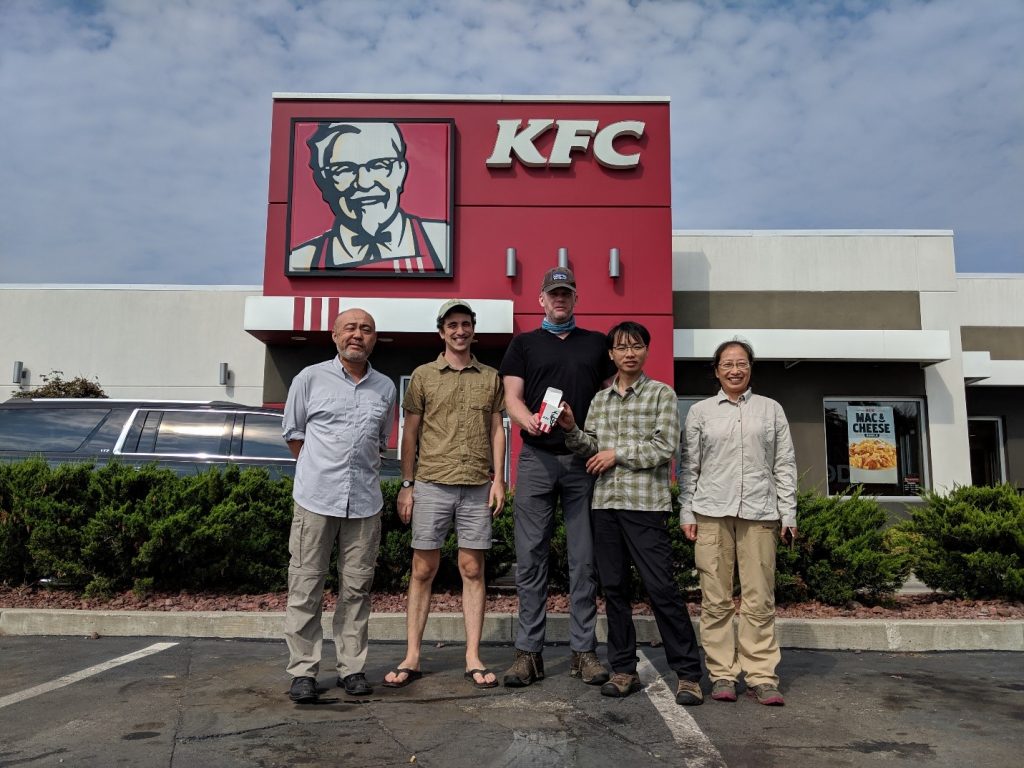
Read the next story in this series of blog posts.
